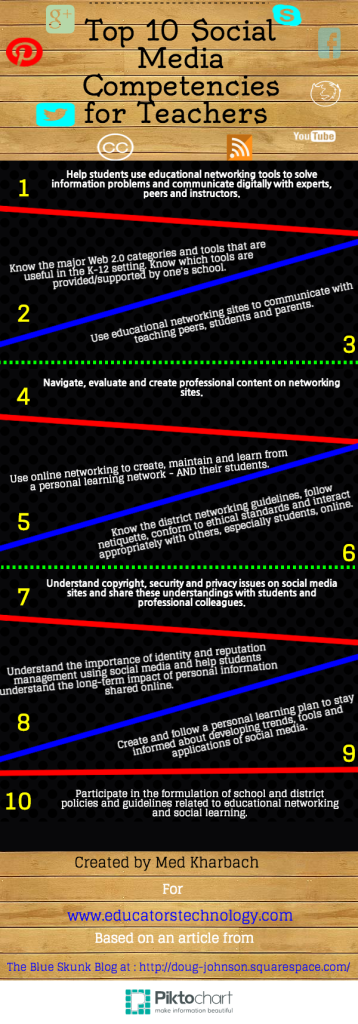Six New Changes in Children’s Media Habits
“The digital generation have an incredible appetite for media. Laura Devaney at eSchool News identifies six important statistics from a Common Sense Media report. Although television remains the most common platform for children’s educational content, mobile device usage has skyrocketed in recent years. What will this mean for schools and their students? ”
Children’s mobile media use has skyrocketed, report shows
Children’s use of mobile devices and mobile apps has jumped dramatically in the past two years, doubling and tripling in some cases, according to results from a large national Common Sense Media report.
In 2011, 8 percent of families with children ages 0-8 owned an iPad or similar tablet device. In 2013, 40 percent of those families had an iPad or similar device. According to “Zero to Eight: Children’s Media Use in America 2013,” smart phone ownership has grown from 41 percent of families in 2011 to 63 percent of families today.
Two years ago, roughly half (52 percent) of all children up to age 8 had access to a new mobile media device such as a tablet or smart phone. Now, 75 percent of children have this access.
The report also reveals a marked increase in children who use mobile devices every day–from 8 percent in 2011 to 17 percent today. The amount of time children spend using these devices has tripled, jumping from 5 minutes a day among all children in 2011 to 15 minutes in 2013.
The authors note that along with expanded access comes greater use. Almost two times the number of children ages 0-8 have used a mobile device (72 percent) as compared to 2011′s results (38 percent).
Here are six key findings in the report:
1. Children’s access to mobile media devices is much greater today than two years ago. In 2011, only 8 percent of families with children ages 0-8 owned a tablet device. In 2013, 40 percent of families reported owning a tablet.
2. Roughly twice as many children use mobile media today than in 2011. The amount of time using the devices has increased, which is a reflection of wider access to devices. Today, 72 percent of children ages 0-8 have used a mobile device.
3. “Traditional” screen media use, such as television and video games, has decreased by more than 30 minutes per day. Overall, children ages 0-8 spend 1 hour and 55 minutes on “screen time” a day, compared to 2 hours and 16 minutes in 2011.
4. Children still spend most of their media time watching television, but viewing habits have changed. Fifty-eight percent of children watch TV at least once a day. Half of children’s daily screen time (1 hour and 55 minutes each day) is spent watching TV on a TV set, but this viewing includes watching pre-recorded, downloaded or streamed, or on-demand programs.
5. Poor and minority children have more access to mobile devices and apps than they did two years ago, but a large access gap still remains.Access to high-speed internet has remained about the same, with 42 percent of low-income families having access in 2011 and 46 percent having access in 2013. But access to smart phones is increasing–27 percent of lower-income families reported owning a smart phone in 2011, and in 2013, that figure has jumped to 51 percent. Tablet ownership, which sat around 2 percent in 2011, jumped to 20 percent of lower-income families. In 2011 just 22 percent of lower-income children had ever used a mobile device, and today, 65 percent of lower-income children have. But gaps still remain: though 20 percent of lower-income children own a tablet, 63 percent of higher-income children do. Thirty-five percent of lower-income parents have downloaded educational apps for their children, compared with 75 percent of higher-income parents.
6. Television is the most common platform for children’s educational content. Though many children access educational materials on mobile devices, television continues to top the list. Sixty-one percent of children ages 0-8 “often or sometimes” watch educational TV shows. When it comes to children ages 5-8, 59 percent “often or sometimes” watch educational TV, 48 percent “often or sometimes” use educational computer games, and 44 percent “often or sometimes” use educational games or apps on mobile devices. Fifty-four percent of higher-income children “often or sometimes” use educational content on mobile devices, but only 28 percent of lower-income children do the same.
The authors note that “the change in screen media use from 2011 to 2013 is a result of children spending less time using ‘traditional’ screen media” such as watching television and DVDs, but “on the other hand, children are averaging more time consuming media on mobile devices such as smart phones and tablets in 2013 than they did two years ago.”
The report is the second in a series of national surveys on children’s media use. Researchers used the same methods used with the first report in order to document how children’s media behaviors have changed.


 BOXED IN: Jane Corless, who has a cochlear implant, being scanned by the new machine. (NICK MOIR/Fairfax)
BOXED IN: Jane Corless, who has a cochlear implant, being scanned by the new machine. (NICK MOIR/Fairfax)
 Emma’s voice can be heard on several London Underground lines
Emma’s voice can be heard on several London Underground lines
 Sara was unveiled as the latest voice of the speaking clock in 2007
Sara was unveiled as the latest voice of the speaking clock in 2007